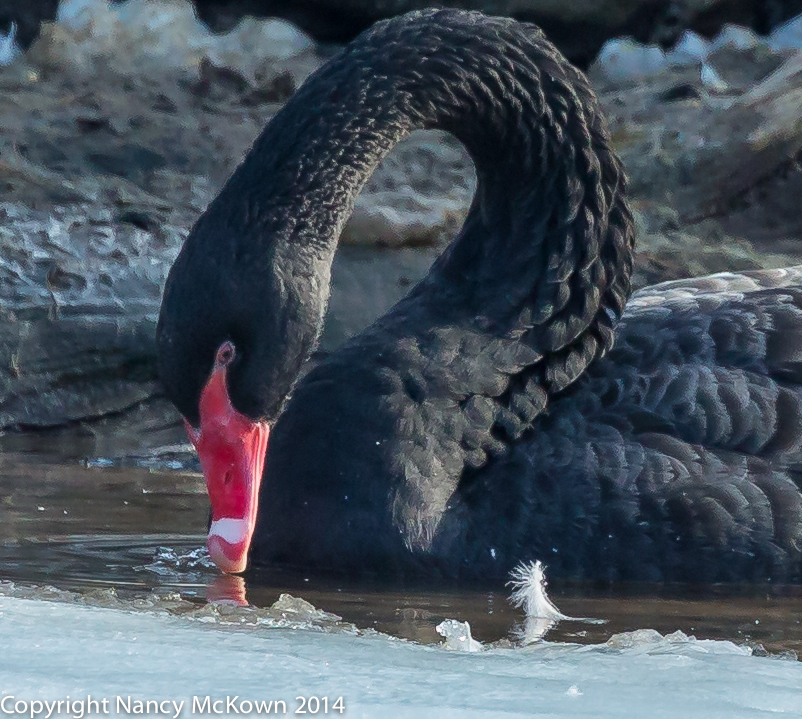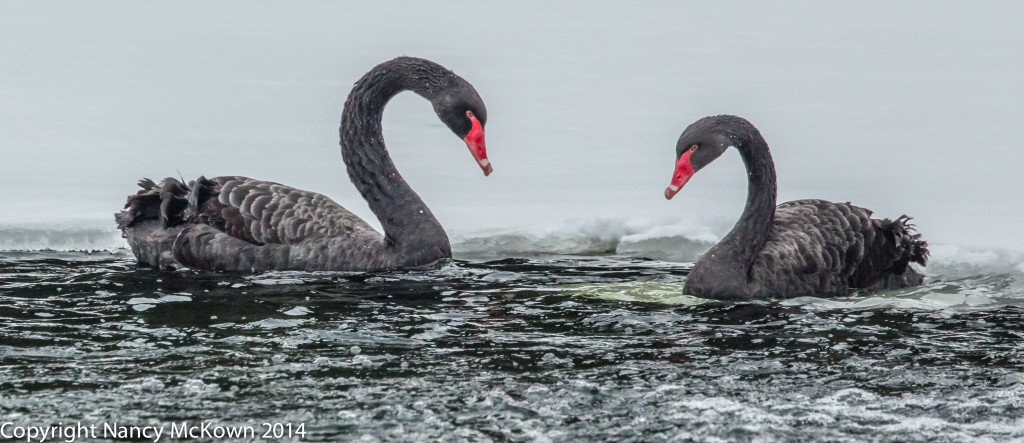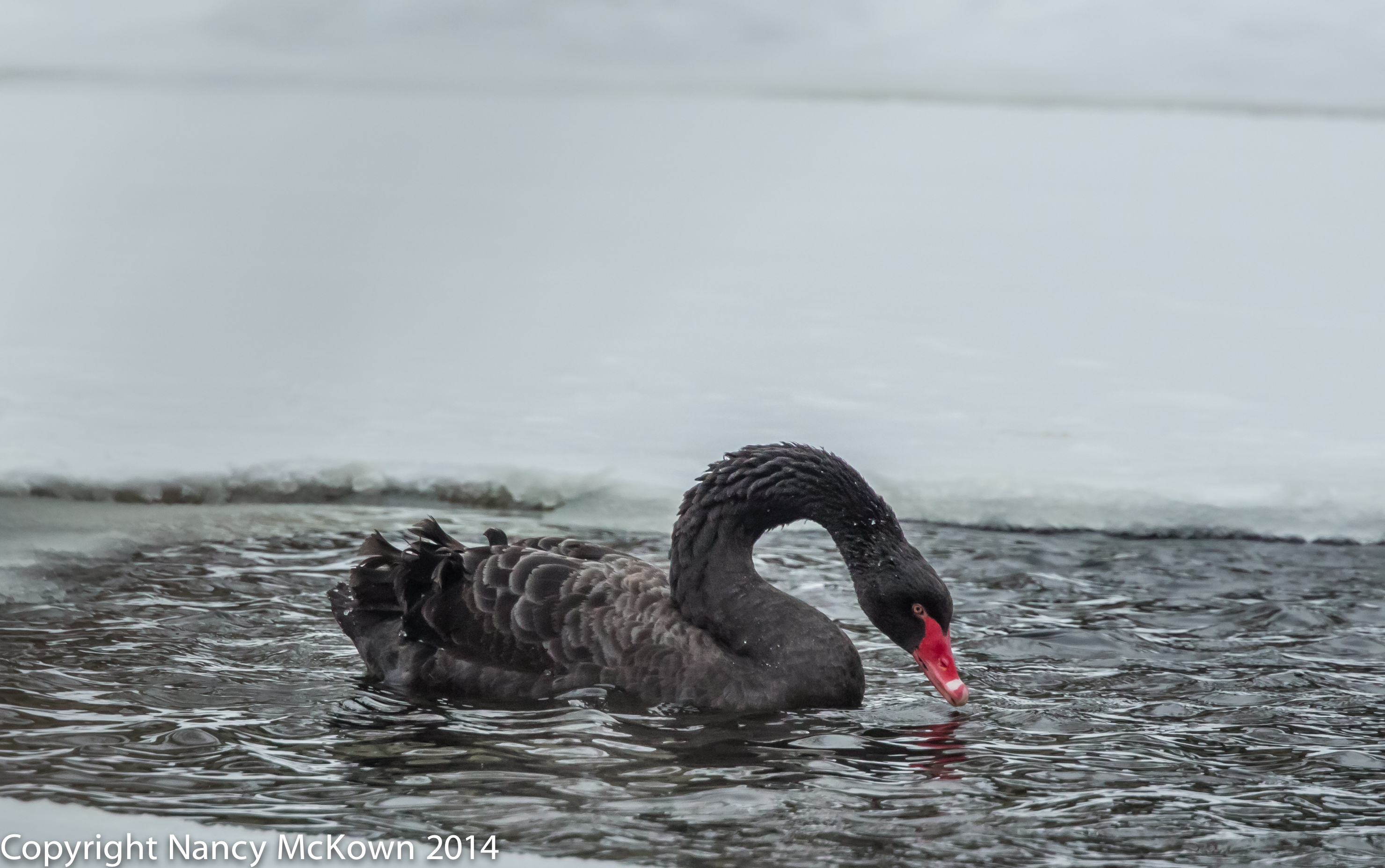Black Swans Wintering in Michigan
Black Swans are native to Australia, but shipped around the world because they are popular birds for zoological gardens and private bird collections. Exotic enthusiast often clip the primary flight feathers at the end of the wings. This is done, of course, to keep the bird from flying away. Since an exotic bird is not in its natural environment, keeping it safe and away from harmful predators and the elements often requires that the owners restrict its flight. This was no doubt the case for the Black Swans I came across in SW Michigan. These wild, but captive swans are beautiful and ornately situated in a well stocked pond with gazebo, on private property.
Keeping captured, ornamental birds is not something I would do, but I was glad to have the opportunity to photograph them.
Photographing High Contrast Scenes
When I looked at the black swans swimming in open water through my viewfinder, I was presented with a high contrast scene. In the forefront, there was brightly lit snow and ice. In the background, depending on the swans’ movements, there was either bright, white snow, or dark brown tree roots and dirt. I took a couple test shots and found that the camera’s light meter (set to Evaluative Metering) was having difficulty getting an accurate light reading.
Evaluative Metering v Spot Metering
Evaluative metering on DSLR cameras measures the light reflecting off the whole scene in the viewfinder to determine exposure settings. When using this metering mode to photograph the swans, the light meter was being over-influenced by the brightness in the foreground and background. It was a good opportunity to try out my camera’s spot metering function. NOTE: I usually keep my camera set on evaluative metering mode because EM is considered to be the most reliable of the automatic exposure settings. For more information on evaluative metering mode, see this post.
When to Use Spot Metering
When lighting conditions are such that you think the light meter should take a meter reading from a designated “spot” in the viewfinder rather than the whole scene, set the camera to spot metering. Spot metering gives you more control over exposure by allowing you to choose a small, center spot (approx 1%- 5% of the viewfinder) on which your camera will calculate the light for exposure and set the exposure values. This gives you the ability to meter only the bird- or a small part of the bird, depending on how close you are to your subject.

ISO 1600; f/7.1; 1/1250 Second

ISO 2000; f/9.0; 1/1250 Second
Don’t Confuse Spot Metering With Spot Focusing
For way too long, I confused the spot metering function with spot focusing. These are two completely different functions often used together, but not necessarily. Spot focusing allows the photographer to set one very small spot in the scene on which the lens will focus.
Spot focusing gives the photographer much more maneuverability than spot metering because the focus spot does not have to be locked in the center of the viewfinder. On my camera, spot metering is restricted to the center, and spot focusing can be set in a wide variety of off center locations.
Give Spot Metering a Try
Spot metering is another one of those camera settings that is often ignored by bird photographers because there are so many other things to think about when the action is at its peak and time is short. Experimenting with the spot metering function is a very good way to better understand how your camera calculates exposure. Light, after all, is what photography is all about.









